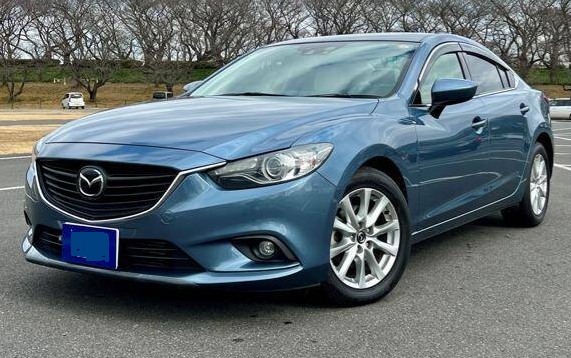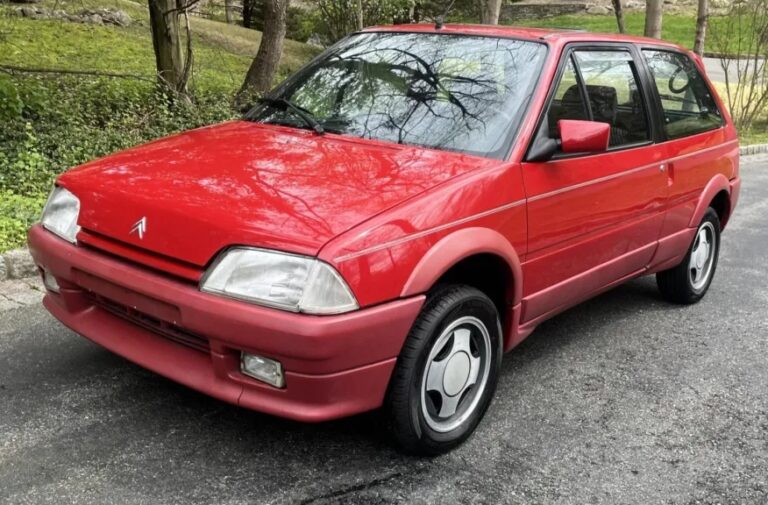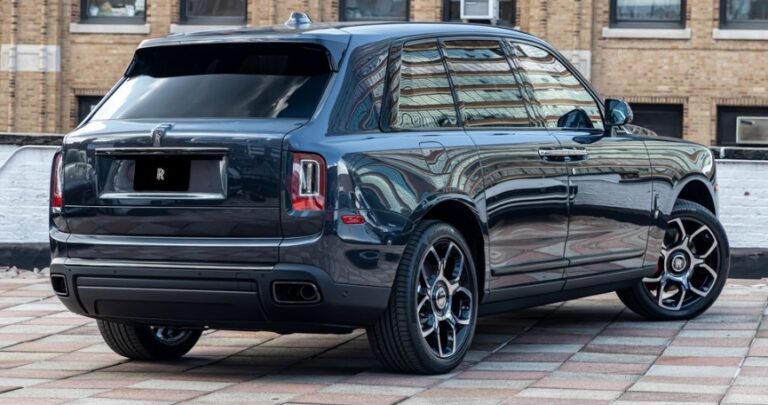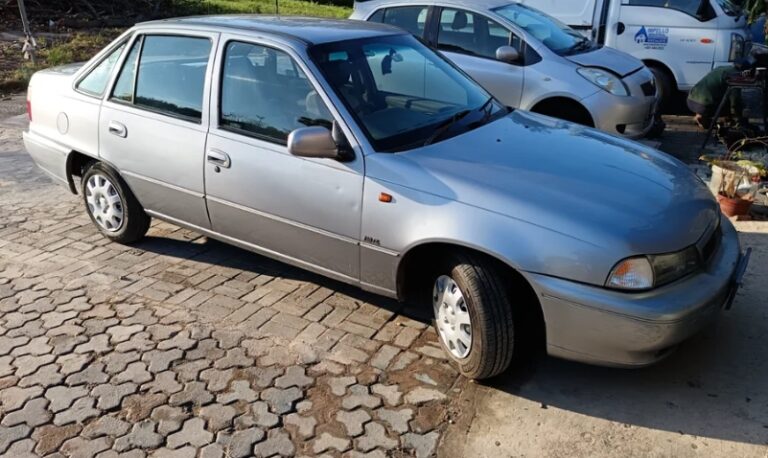The Soul of Motion: A Definitive Evolution of the Mazda Atenza
In the often-homogenous world of the mid-size family car, one name has consistently stood for something more than mere transportation: the Mazda Atenza. Known to the rest of the world as the Mazda6, the Atenza has, for over two decades, been Mazda’s standard-bearer for its “Zoom-Zoom” philosophy—a tangible promise that practicality and driving pleasure are not mutually exclusive. It represents a journey from a competent but forgettable past into a future of stunning design, advanced engineering, and near-premium ambition. This is the story of its evolution, a factual chronicle of a car that always dared to be the driver’s choice.
Precursor: The End of the Capella Era
Before the Atenza, there was the Mazda Capella (known as the 626 in most export markets). While a reliable and sensible car that served Mazda well for decades, by the late 1990s it had become an embodiment of automotive anonymity. It was a product of its time—a beige appliance in a sea of similar offerings from Toyota and Honda. As the new millennium dawned, Mazda, under the fresh influence of Ford ownership and a revitalized engineering spirit, knew it needed a revolution, not an evolution. It needed a car with soul.
First Generation (GG/GY): The Birth of Zoom-Zoom (2002-2008)
Launched in Japan in May 2002, the first-generation Mazda Atenza was a profound statement of intent. This was not your parent’s Capella. Built on the all-new GG platform (GY for the wagon), it was sharper, more athletic, and infused with a dynamic character that immediately set it apart from the Camry and Accord. The name “Atenza,” derived from the Italian word attenzione (attention), was fitting; this car demanded to be noticed.
The design featured taut lines, flared wheel arches, and a distinctive front fascia that gave it a poised, aggressive stance. On the road, its sophisticated multi-link rear suspension and communicative steering were lauded by critics, delivering a level of handling prowess previously unseen in the segment.
Models and Trim Levels:
The first-generation Atenza was notably versatile, offered in three distinct body styles to cater to a wide range of needs:
Sedan (GG): The traditional four-door, forming the core of the lineup.
Sport (Hatchback/Liftback) (GG): A five-door version offering enhanced practicality without sacrificing the sedan’s sleek profile. This model was particularly popular in Europe.
Sport Wagon (GY): A stylish and functional estate model that proved a family car could still be desirable to drive.
In its home market of Japan, the Atenza trim structure was based primarily on engine displacement and features:
20F, 20C, 20E: These entry-level trims were equipped with a 2.0-liter MZR inline-four engine.
23S, 23E, 23Z: The more popular and powerful models featured the 2.3-liter MZR inline-four. These trims often included larger alloy wheels, sportier suspension tuning, and upgraded interior appointments.
The Halo Car: Mazdaspeed Atenza (2005-2007)
To cement the Atenza’s performance credentials, Mazda’s in-house tuning division created a legend: the Mazdaspeed Atenza (sold as the Mazdaspeed6 or Mazda6 MPS globally). This was a true performance sedan, featuring:
A 2.3-liter MZR direct-injection turbocharged (DISI) engine producing around 272 horsepower.
A sophisticated Active Torque Split All-Wheel Drive system.
A mandatory six-speed manual transmission.
A subtly aggressive body kit, a raised hood to accommodate the top-mount intercooler, and a unique rear spoiler.
The Mazdaspeed Atenza was a cult classic, a genuine “sleeper” that could challenge European sport sedans of the era. It was the ultimate expression of the first generation’s “Zoom-Zoom” spirit.
Second Generation (GH): Refinement and Maturity (2008-2012)
Unveiled at the 2007 Frankfurt Motor Show, the second-generation (GH) Atenza aimed to build upon its predecessor’s success. It grew in size, offering more interior space and a greater sense of comfort and refinement. While the design was an evolution of the first-gen’s themes, it was softer, more fluid, and incorporated Mazda’s new “Nagare” (flow) design language, evident in the prominent front fenders and flowing character lines.
Interestingly, Mazda developed two distinct versions of the GH platform. North America received a wider, longer version to better compete with its upsized rivals, while Japan, Europe, and other markets received a slightly smaller, more agile version that stayed truer to the original’s nimble character.
The focus of this generation was on enhancing the premium feel. Interior materials were significantly upgraded, cabin noise was reduced, and more advanced features became available. While some enthusiasts felt it lost a fraction of the raw edge of the original, it was undeniably a more mature and well-rounded vehicle.
Models and Trim Levels:
The three body styles carried over, though the five-door hatchback was not offered in the North American market.
Sedan
Sport (Hatchback/Liftback)
Sport Wagon
In Japan, the trim nomenclature was updated to reflect the new engine lineup:
20C, 20S: Powered by the revised 2.0-liter MZR engine, often paired with a CVT or 5-speed automatic.
25F, 25S, 25EX: The premier trims, featuring the new, more powerful 2.5-liter MZR inline-four, which replaced the old 2.3L. The “EX” trim denoted the highest level of luxury, often including leather upholstery, advanced keyless entry, and premium audio systems.
This generation did not receive a Mazdaspeed variant, a point of disappointment for some fans. Instead, Mazda focused on broadening the car’s appeal as a comfortable, stylish, and efficient daily driver with a sporty heart.
Third Generation (GJ/GL): The Kodo and Skyactiv Revolution (2012-2024)
The third-generation Atenza, launched in 2012, was nothing short of a paradigm shift. It was the first production vehicle to fully embody two of Mazda’s most transformative philosophies: “Kodo – Soul of Motion” design and Skyactiv Technology.
The Kodo design language gave the Atenza a breathtaking appearance. Inspired by the poised energy of a predator about to pounce, its long hood, cab-rearward proportions, and muscular, flowing lines made it arguably the most beautiful car in its class. It looked more like a premium rear-wheel-drive European sedan than a mainstream front-wheel-drive offering from Japan.
Beneath the skin, the Skyactiv suite of technologies represented a holistic approach to efficiency and performance. This included new high-compression gasoline (Skyactiv-G) and low-compression diesel (Skyactiv-D) engines, lighter and more efficient transmissions, and a chassis and body that were both stronger and significantly lighter than the outgoing model. This generation firmly moved the Atenza into a “near-premium” space, challenging not just its traditional rivals, but also entry-level models from luxury brands.
The Mid-Cycle Refresh (GL): A Push Upmarket (2018-onward)
This generation had an exceptionally long life, punctuated by a significant refresh for the 2018 model year, often referred to by the “GL” chassis code. This update was more than skin-deep. The exterior received a cleaner, more elegant grille and lighting, while the interior was completely redesigned. The new dashboard was cleaner, more horizontal, and featured superior materials like Nappa leather, genuine Sen wood, and Ultrasuede trim on top-tier models.
Crucially, this update also brought a long-awaited powertrain enhancement: the 2.5-liter Skyactiv-G turbocharged engine from the CX-9 SUV, finally giving the sedan the effortless power it deserved. Suspension was retuned for a quieter, more supple ride, and Mazda’s G-Vectoring Control Plus technology further enhanced its poised handling.
Models and Trim Levels:
For this generation, the lineup was simplified to two body styles globally, with the hatchback being discontinued.
Sedan
Wagon
The Japanese trim levels reflected the new Skyactiv engines and the push towards premium packages:
20S: The base model with the 2.0-liter Skyactiv-G engine.
25S L Package: The higher-spec model with the 2.5-liter naturally aspirated Skyactiv-G and a host of luxury features.
XD, XD L Package: Equipped with the torque-rich 2.2-liter Skyactiv-D twin-turbo diesel engine.
25T S Package (post-2018): Introduced the powerful 2.5-liter turbocharged engine.
In North America, the trim walk became a clear progression upmarket: Sport, Touring, Grand Touring, and the post-refresh additions of Grand Touring Reserve and the top-of-the-line Signature, which included all the premium materials and technology Mazda could offer.
.

.
The End of an Era
Despite critical acclaim and a dedicated fanbase, the market’s inexorable shift toward SUVs proved too strong. Mazda discontinued the Mazda6 (Atenza) in North America after the 2021 model year. In a move that signaled the end of its long and storied journey, Mazda announced that production of the Atenza for the Japanese market would cease in April 2024.
The legacy of the Mazda Atenza is a powerful one. It proved that a family car could be an object of desire. It consistently delivered a superior driving experience, punching far above its weight in dynamics and design. From the raw “Zoom-Zoom” energy of the first generation, through the refined maturity of the second, to the breathtaking beauty and technical sophistication of the third, the Atenza never lost its focus on the driver. It remains a high-water mark for mainstream sedans and a testament to Mazda’s unwavering belief that some cars are meant to be more than just A-to-B transport—they are meant to be driven and loved.







